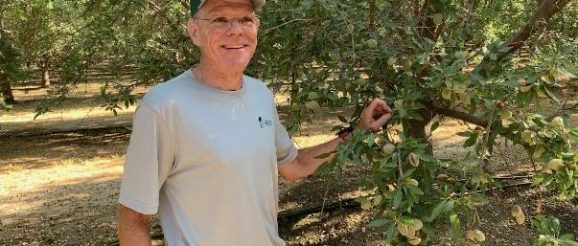Unleashing Innovation: Phase One of Your Endurance Race in Ag Technology – Global Ag Tech Initiative

Every endurance race is different, but they all have one thing in common: At some point during the race, you will want to quit.
Bringing new innovative, never-before-experienced technology to farmers and the agriculture sector shares that feature. At some point during the race, you will find those nagging thoughts rising in your mind: Why did I think this was a good idea? Who do I think I am?
At that point, knowing in advance that you simply reached another stage in the race – another chance for perseverance – can be helpful in the move forward. To better understand your journey, I suggest you break it up into several phases.
Phase One: Choosing Your Race
Way before you toe the starting line, there are decisions to be made. What hurdles will this race bring? Will I be running on a hilly course or mostly flat? Will this race take me off-road or is it all pounding the pavement? Will the scenery offer me some consolation in the midst of the pain I know might be coming? Am I in good shape for this?
MORE BY ALLAN FETTERS
Why the Race for Ag Technology Adoption is a Marathon, Not a Sprint
Bringing the analogy back to farm and field, which crop producers are you interested in pursuing with your innovation? Often, some version of the innovation will touch multiple crops, but how many and what kind?
“Run when you can, walk when you have to, crawl if you must; just never give up.” — Dean Karnazes, Ultramarathoner
In California, for example, there are over 400 different crops that are considered “specialty crops.” They run the gamut from A to Z, artichokes to zucchini. Each of these crops has its own set of in-field issues when it comes to maximizing productivity. Each has its own “hurdles or hills” making it difficult to find the single innovation to bring value to growers of these crops.
Adding to the challenge is the total addressable market of only 16 million acres. And, to raise the bar a bit more, 50% of those farms have an average size of fewer than 25 acres, while the U.S. national average farm size is 444 acres. Even given the high-value nature of these acres, it still is often less attractive to innovators than the hundreds of millions of acres of broadacre crops.
Allan Fetters says there are clear benefits to “unleashing” ag tech innovation in specialty crops.
But there are clear benefits to choosing the “specialty crop marathon,” too. The diversity in crops is directly tied to the diversity in equipment required to plant, till, spray and harvest these crops, and in each case, there is room for improvement. Also, specialty crop growers often have an advantage as they aren’t as reliant on the weather, as most acres are under some form of irrigation. Of the 16 million acres of specialty crops grown, about 10 million are under irrigation which provides both the necessary water for the crop, as well as an application conduit for applying fertilizer and crop protectants. Understanding this fact, and the gift of consistency it can bring to new technology introduction (decreased moisture variability), may allow you to boost your idea along the racecourse more quickly.
One of the largest hills that specialty crops face is the lack of visibility of harvest data. Yes, growers know how much they produce, but they don’t know spatially, as in most of the crops there is no means to track their yields more precisely than at field level, as yield monitors are not a common feature on harvest equipment. To complicate yield collection, many of the specialty crops are hand-harvested, about 20-25% of the vegetables and 40-45% of the fruit. This lack of a clear scorecard has made it difficult to validate the benefits or value gained using agricultural innovations across specialty crops, thereby slowing the adoption curve.
It’s my hope that these thoughts are valuable to you. While it’s only the first of several phases of your endurance race, choosing your specific course is key. Those that are pulling ahead in their technology adoption marathons have been purposeful in picking their race, are building authentic, honest relationships, and listening intently to their prospective customers, advisors, and coaches. They are examining and reexamining their offerings to ensure they are in alignment with expectations of the value provided through the adoption and continued use of these innovations.
Perfect your innovation, surpass the expectations of the customer, and begin building your brand as you expand into new distances of business growth. And, enjoy the journey, even when it requires toughness you never knew you had.
Subscribe Today For
Allan Fetters is a California almond grower, marathon runner, and the founder of AGceleration Advisory Service, a business development firm devoted to new technology in agriculture. A veteran of more than 30 years in crop input retail, he most recently was with Simplot, where he was instrumental in launching SmartFarm precision agriculture. For more information on his Six Phases of Unleashing Innovation, connect with Allan at www.AGceleration.com.
See all author stories here.
